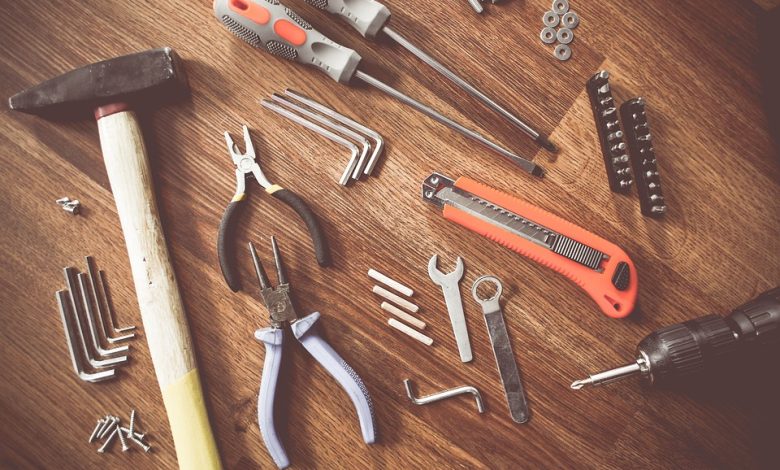How to Create an Eco-Friendly Home: 8 Essential Tips for Environmental Living – MyCyberBase

How to Create an Eco-Friendly Home: 8 Essential Tips for Environmental Living
Heading: Introduction to Eco-Friendly Living
Subheading 1: Understanding the Importance of an Eco-Friendly Home
In today’s world, where environmental concerns are growing rapidly, creating an eco-friendly home has become more important than ever. By adopting environmentally-conscious practices, we can contribute to the preservation of our planet. This article provides you with eight essential tips to help you transform your home into an eco-friendly haven.
Heading: Tip 1: Optimize Energy Efficiency
Subheading 2: Embrace Sustainable Energy Sources
One of the primary aspects of an eco-friendly home is optimizing energy efficiency. By embracing sustainable energy sources, such as solar or wind power, you can significantly reduce your carbon footprint. Installing solar panels or a wind turbine can provide clean and renewable energy for your home. This not only decreases your dependency on fossil fuels but also helps you save on electricity bills in the long run.
Subheading 3: Upgrade to Energy-Efficient Appliances
Another crucial step toward an eco-friendly home is upgrading to energy-efficient appliances. Replace outdated appliances with energy-efficient models such as refrigerators, air conditioners, and washing machines. Look for appliances with an Energy Star rating, as they consume considerably less energy while still delivering top-notch performance.
Heading: Tip 2: Conserve Water Resources
Subheading 4: Install Low-Flow Fixtures
Conserving water resources is pivotal for an eco-friendly home. Install low-flow fixtures, including faucets, showerheads, and toilets. These fixtures are designed to limit water flow without compromising functionality. By reducing water consumption, you can save money on utility bills and contribute to preserving our planet’s valuable water resources.
Subheading 5: Harvest Rainwater
Another effective way to conserve water is by harvesting rainwater. Install a rain barrel or a rainwater harvesting system to collect rainwater from roofs and gutters. This harvested water can be used for watering plants, cleaning, or even flushing toilets. By utilizing rainwater, you can reduce your reliance on municipal water sources and conserve this precious resource.
Heading: Tip 3: Choose Sustainable Building Materials
Subheading 6: Opt for Renewable Materials
When constructing or renovating your home, opt for sustainable and renewable building materials. Materials such as bamboo, reclaimed wood, and recycled glass empower you to reduce environmental impact and promote sustainability. Additionally, these materials often possess excellent durability and aesthetic qualities, making them an ideal choice for an eco-friendly home.
Subheading 7: Consider Insulation Options
Insulation plays a vital role in maintaining an energy-efficient home. Choose insulation materials that have a lower environmental impact, such as cellulose, recycled cotton, or sheep’s wool. Effective insulation helps reduce heating and cooling requirements, thereby saving energy and minimizing greenhouse gas emissions.
Heading: Tip 4: Embrace Natural Lighting and Ventilation
Subheading 8: Maximize Natural Lighting
Embracing natural lighting in your home is an effective strategy to reduce electricity consumption. Ensure windows are strategically placed and unobstructed to allow ample sunlight to enter. By maximizing natural lighting, you not only create a warm and inviting atmosphere but also minimize the need for artificial lighting during the day.
Subheading 9: Enhance Natural Ventilation
Proper ventilation is essential for a healthy and eco-friendly home. Incorporate design elements that facilitate cross-ventilation and natural airflow, eliminating the need for energy-consuming air conditioning systems. Install ceiling fans or consider the placement of windows to allow fresh air circulation throughout your home.
Heading: Tip 5: Practice Waste Management
Subheading 10: Embrace Recycling and Composting
Managing waste in an eco-friendly way is crucial for preserving the environment. Embrace recycling by separating recyclable materials and disposing of them correctly. Additionally, composting organic waste, such as kitchen scraps and garden trimmings, is an excellent way to reduce landfill waste and create nutrient-rich soil for gardening.
Subheading 11: Reduce Single-Use Plastics
Single-use plastics are a significant threat to the environment. Minimize their usage by opting for reusable alternatives like cloth bags, stainless steel water bottles, and glass food containers. By reducing single-use plastics, you can help combat plastic pollution and protect our oceans and wildlife.
Heading: Tip 6: Harness Sustainable Landscaping Practices
Subheading 12: Embrace Native Plants
Creating an eco-friendly home extends to your landscaping practices as well. Embrace native plants in your garden as they are well-suited for the local climate, require less water, and support local wildlife. Avoid using chemical fertilizers and pesticides, opting for natural alternatives like compost or organic pest control methods.
Subheading 13: Implement Efficient Irrigation Systems
Efficient irrigation systems are crucial for maintaining healthy landscapes while conserving water. Install drip irrigation systems or use rain sensors to ensure your plants receive water only when needed. This prevents water wastage and ensures your garden thrives while minimizing environmental impact.
Heading: Tip 7: Reduce Your Carbon Footprint
Subheading 14: Opt for Sustainable Transportation
Reducing your carbon footprint isn’t limited to your home; it extends to your daily commute as well. Opt for sustainable transportation options like walking, cycling, or using public transportation whenever possible. If driving is necessary, consider carpooling or investing in hybrid or electric vehicles.
Subheading 15: Conserve Energy on the Go
Apart from transportation choices, practice energy conservation in other aspects of your life. Turn off lights and unplug electronic devices when not in use. Use energy-efficient LED bulbs and select appliances with low standby power consumption. Small changes can collectively make a significant impact in reducing your carbon footprint.
Heading: Tip 8: Educate Yourself and Spread Awareness
Subheading 16: Stay Informed and Engage
Continuously educate yourself about environmental issues and engage in sustainable practices. Stay updated with the latest eco-friendly technologies, government policies, and environmental initiatives. Share your knowledge with friends, family, and the community to raise awareness and inspire others to create eco-friendly homes as well.
FAQs (Frequently Asked Questions)
Q: Can an eco-friendly home also be stylish and aesthetically pleasing?
A: Absolutely! Many eco-friendly building materials and design techniques offer both sustainability and visual appeal. With proper planning and guidance, you can create a stunning home while maintaining a commitment to the environment.
Q: Are eco-friendly homes more expensive to build or renovate?
A: Initially, eco-friendly homes might have slightly higher upfront costs due to the use of sustainable materials and energy-efficient appliances. However, the long-term savings on energy bills, water conservation, and potential tax incentives often outweigh the initial investment.
Q: What is the biggest advantage of living in an eco-friendly home?
A: The most significant advantage of living in an eco-friendly home is the positive impact it has on the environment. By reducing energy consumption, conserving water, and embracing sustainable practices, you contribute to slowing down climate change and preserving natural resources for future generations.
Q: Can renters also adopt eco-friendly practices in their homes?
A: Absolutely! Renters can adopt many eco-friendly practices, such as conserving energy, reducing water usage, and practicing waste management. Discuss these ideas with your landlord and see if any modifications or upgrades are feasible.
In conclusion, creating an eco-friendly home is not only environmentally responsible but also financially beneficial in the long run. By optimizing energy efficiency, conserving water, choosing sustainable materials, and embracing various eco-friendly practices, you can make a significant difference in protecting our planet for generations to come.
Remember, by taking small steps towards environmental living, we all contribute to a greener future. Start implementing these eight essential tips today and inspire others to join the eco-friendly movement!
#Create #EcoFriendly #Home #Essential #Tips #Environmental #Living





